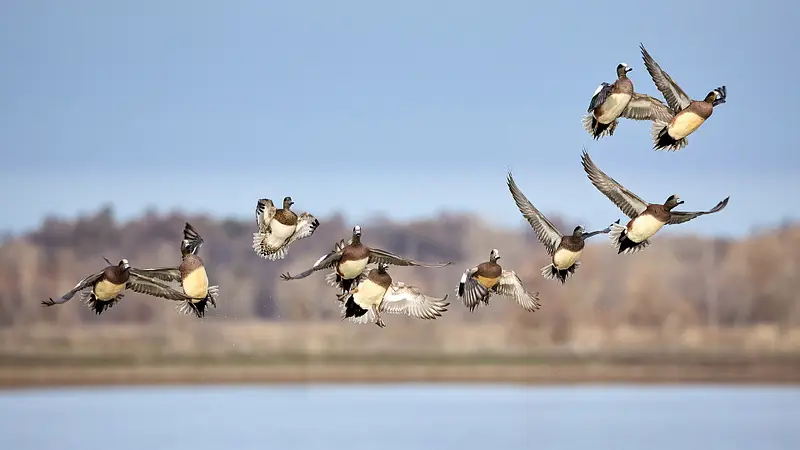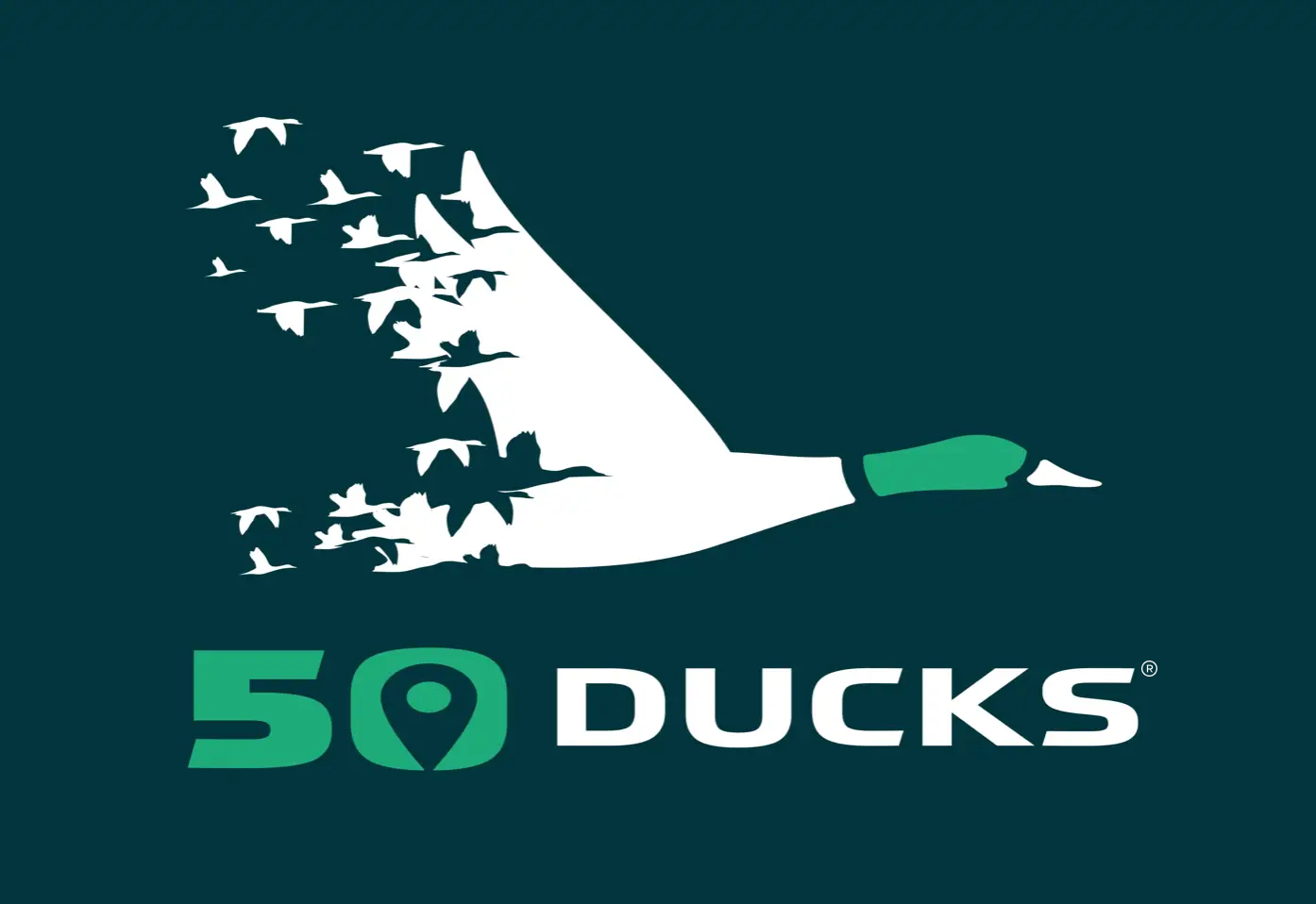About American Wigeon
The American Wigeon (Mareca americana) nests further north than all other dabbling ducks except for the Northern Pintail. The majority of their nesting occurs in the upper reaches of the boreal forest. They can be found across all four major North American flyways, with over half of the breeding population located in the Pacific Flyway. American Wigeon are relatively late nesters, typically beginning in late May and continuing into early June. With the exception of teal, Wigeon are often some of the first birds to begin their fall migrations. Drakes have a distinctive green patch around the eye and a white “crown,” which has earned them the nickname “baldpate.”
American Wigeon have a distinctive “whistling” call and are a favorite among the waterfowling community.

Identification
American Wigeon can be identified by their compact bodies, round heads, and short bills. Males feature a striking green patch around their eyes and a white crown, while females have a more subdued mottled brown plumage with a grayish head and a subtle light patch near the bill.
Breeding
The Wigeon often nests in very remote landscapes due to their typically northern breeding grounds. The hen will lay around nine eggs, with the male staying until the end of incubation before leaving to molt. The female often molts in the same location or in close proximity to her nesting site. As a result, males are often believed to begin fall migration earlier than females, as they molt 4-6 weeks before them. An estimated 66% of Wigeon breed in the Boreal Forest.
Behavior
Known for their distinctive "whistling" call, Wigeon are frequently observed in large flocks, and they have a unique behavior of stealing food from diving ducks when they surface.
Habitat
The American Wigeon inhabits a variety of wetland environments, including marshes, ponds, lakes, and rivers, often favoring areas with abundant aquatic vegetation. While half of the breeding population inhabits the Pacific Flyway, they are present across all four major North American flyways.
Migration
American Wigeon are medium-distance migrants that travel across all four major North American flyways, with a significant portion of the population residing in the Pacific Flyway. They are among the first birds to begin fall migration, with males often starting earlier due to their molting schedule, which is 4-6 weeks ahead of the females.
No Data Found
How many days tracked
Lorem ipsum dolor sit amet, consectetur adipiscing elit. Ut elit tellus, luctus nec ullamcorper mattis, pulvinar dapibus leo.
Where are they now?
Lorem ipsum dolor sit amet, consectetur adipiscing elit. Ut elit tellus, luctus nec ullamcorper mattis, pulvinar dapibus leo.
No Data Found
No Data Found
Total Number of Data Points for American Wigeon
Lorem ipsum dolor sit amet, consectetur adipiscing elit. Ut elit tellus, luctus nec ullamcorper mattis, pulvinar dapibus leo.
Start and End Date Tracking of American Wigeon
Lorem ipsum dolor sit amet, consectetur adipiscing elit. Ut elit tellus, luctus nec ullamcorper mattis, pulvinar dapibus leo.
No Data Found
Overall Data from the Center
This is historical data from various sources. This data is available in its full form on our Duck Map in an easily visualizable format.
